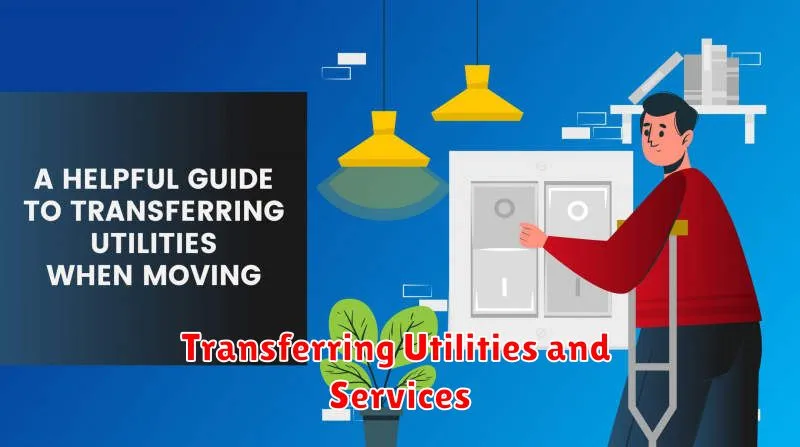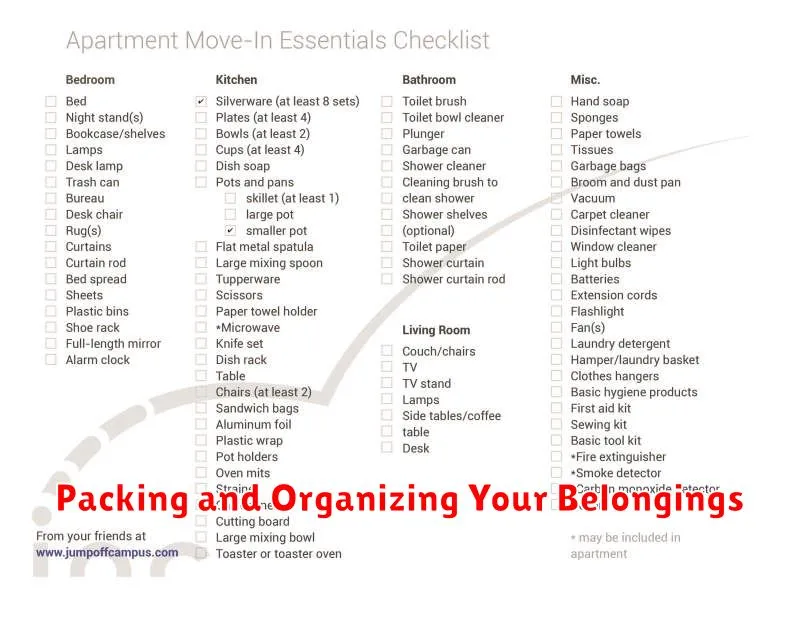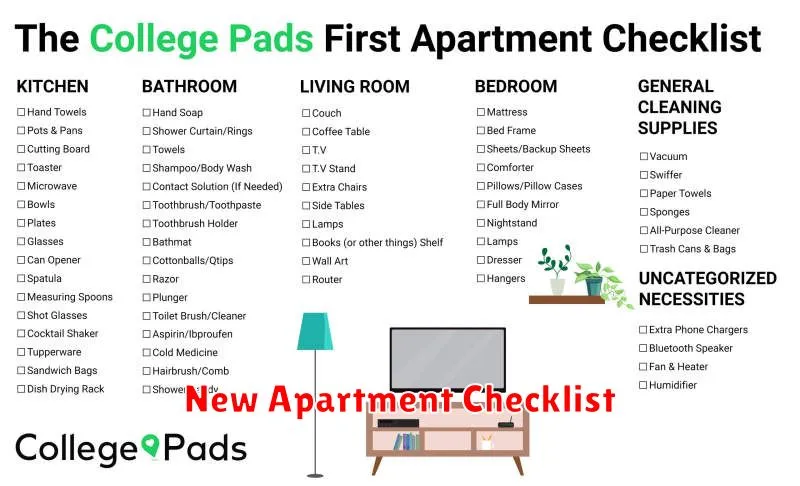Moving into a new apartment can be an exciting experience, but it also requires meticulous planning and preparation. There are several important steps to take before you move in to ensure a smooth transition and a comfortable living environment. From conducting a thorough walkthrough and setting up utilities to organizing your belongings and familiarizing yourself with the neighborhood, this comprehensive guide will equip you with all the essential steps to conquer the pre-move-in process.
Setting a Moving Budget and Timeline
Moving can be an expensive endeavor, and it’s essential to establish a realistic budget before you start packing. Factor in costs like packing supplies, moving truck rentals, potential movers, storage (if needed), and any necessary cleaning supplies for your new apartment. Remember to allocate funds for unforeseen expenses as well.
Once you have a budget in mind, create a detailed timeline for your move. This will help you stay organized and prevent last-minute scrambling. Break down the moving process into manageable tasks, such as packing, cleaning, and contacting utilities. Assign deadlines for each task and ensure you leave enough time for potential delays.
Consider creating a moving checklist to keep track of everything you need to do. This can include tasks like scheduling movers, notifying your current landlord, changing your address, and updating your bank information. Remember to include essential steps for your new apartment, like contacting utilities and arranging for any needed repairs or maintenance.
By establishing a clear budget and timeline, you can reduce stress and ensure a smoother transition into your new apartment. Being prepared and organized will allow you to enjoy the excitement of your new place, knowing you have everything under control.
Finding and Securing Your New Apartment
Finding and securing your new apartment is an exciting step in your life. Before you start touring apartments, it’s crucial to have a clear understanding of your needs and budget. Determine your desired location, budget, and must-have amenities. Research neighborhoods, consider commute times, and explore available amenities in the area. Once you have a good understanding of your preferences, begin searching for apartments that meet your criteria.
Utilize online resources like apartment search websites and social media groups to find available listings. Reach out to real estate agents for assistance and schedule viewings for apartments that pique your interest. During your apartment tours, pay close attention to the overall condition, layout, and neighborhood surroundings. Don’t hesitate to ask questions about the apartment’s features, building rules, and any potential maintenance issues.
Once you’ve found an apartment you like, negotiate with the landlord or property manager on the rent price and lease terms. If you’re satisfied with the terms, submit a formal application and provide the necessary documents. After your application is approved, secure your new apartment by signing a lease agreement and paying the security deposit. Remember to review the lease thoroughly and understand all the terms and conditions before signing.
Transferring Utilities and Services

Moving into a new apartment can be exciting, but it’s essential to remember the practical steps involved. One crucial aspect is transferring your utilities and services to your new address. This ensures uninterrupted service and avoids any potential charges.
First, contact your current utility providers, such as electricity, gas, water, and internet, and inform them about your move. Provide them with your new address and the date of your move. They will guide you through the process of transferring your account and may require you to provide documentation.
Next, you need to set up accounts with new providers at your new address. This involves contacting the utility companies in your new area and providing them with your personal information and the date of your move. Make sure to inquire about any connection fees or setup charges.
It’s a good idea to confirm the transfer dates with all providers and ensure that services will be available at your new apartment on your move-in day. Additionally, take meter readings at both your old and new addresses to avoid any discrepancies in your final bills.
By efficiently transferring your utilities and services, you can avoid any disruptions to your essential services and focus on settling into your new apartment with peace of mind.
Updating Your Address and Forwarding Mail
Once you’ve signed your lease and secured your new apartment, it’s time to tackle the essential task of updating your address and ensuring your mail follows you. This crucial step streamlines your transition and prevents lost or delayed correspondence.
The first step is to notify the United States Postal Service (USPS) of your address change. You can do this online at the USPS website, by phone, or by filling out a Change of Address form available at your local post office. This service will forward mail sent to your old address to your new address for a specified period, typically 12 months.
Beyond the USPS, it’s essential to update your address with various organizations and institutions. These include:
- Banks and financial institutions
- Credit card companies
- Insurance providers
- Utilities (electric, gas, water)
- Telephone and internet providers
- Government agencies (IRS, Social Security)
- Subscription services (magazines, online streaming)
- Employers
- Friends and family
By diligently updating your address with these entities, you can ensure a smooth transition, avoid missed payments, and maintain access to essential services.
Arranging for Movers or Renting a Moving Truck
Once you have your new apartment secured, it’s time to start thinking about how you’re going to get your belongings there. Do you want to hire professional movers or rent a moving truck? The best option for you will depend on your budget, the amount of stuff you have, and how much help you have available.
Hiring professional movers can be a great option if you have a lot of furniture, heavy items, or if you simply don’t want to deal with the hassle of moving yourself. However, it can be expensive, so make sure you get quotes from several different companies before you make a decision.
Renting a moving truck can be a more affordable option, but it will require more work on your part. You’ll need to load and unload the truck yourself, and you’ll need to find friends or family members to help you. You’ll also need to consider the cost of gas, insurance, and any potential parking fees.
No matter which option you choose, it’s important to book your movers or truck early, especially if you’re moving during the peak season (spring and summer). This will help ensure that you get the best price and that you’re able to secure a moving truck or crew on your desired moving date.
Packing and Organizing Your Belongings

One of the most crucial aspects of moving is properly packing and organizing your belongings. Efficient packing can save you time, stress, and potential damage to your items. Start by decluttering. Go through your belongings and get rid of anything you no longer need or use. This will minimize the amount you need to pack and move. Then, create a packing plan. Categorize your items into different boxes and label them clearly. This will help you stay organized and easily find what you need when unpacking. Use different colored tape or markers for each room or category to distinguish them.
Use strong and sturdy boxes for heavier items, and lighter boxes for fragile items. Wrap fragile items individually in packing paper or bubble wrap for extra protection. Pack essential items like toiletries, medications, and a change of clothes in a separate box. This will make it easy to access them once you arrive at your new apartment. Label each box clearly with the contents and the room it belongs to, making unpacking easier. Utilize packing materials like bubble wrap, packing peanuts, and newspaper to prevent damage to fragile items. Consider color-coding boxes or using a numbering system to make them easily identifiable and to prevent confusion. By taking the time to pack and organize your belongings properly, you can avoid unnecessary stress and ensure a smooth transition into your new apartment.
Cleaning Your Old Apartment
Cleaning your old apartment before you move out is essential. It ensures you get your security deposit back and leaves a good impression on the landlord. Here are some steps to take:
1. Start Early: Don’t wait until the last minute. Give yourself ample time to thoroughly clean the apartment.
2. Deep Cleaning: Go beyond your regular cleaning routine. Focus on areas like the kitchen, bathroom, and closets. Clean the fridge, oven, microwave, and dishwasher. Scrub the bathroom tiles, shower, and toilet. Wipe down the walls and baseboards.
3. Dispose of Trash and Clutter: Take out all trash and dispose of any unwanted items. Organize and pack items you’re not taking with you.
4. Vacuum and Mop: Vacuum all carpets and floors. Mop hard floors thoroughly.
5. Window and Mirror Cleaning: Clean all windows and mirrors inside and out.
6. Check for Damages: Inspect the apartment for any damage and repair it if possible. Inform your landlord of any significant damage.
7. Final Walkthrough: Before leaving, do a final walkthrough with your landlord. This ensures both of you are aware of the condition of the apartment.
Taking the time to clean your old apartment thoroughly ensures a smooth transition to your new home.
Conducting a Final Walkthrough Inspection
Before you start moving your belongings into your new apartment, schedule a final walkthrough inspection with your landlord or property manager. This is a crucial step to ensure that the apartment is in the condition you agreed upon in the lease agreement. During the inspection, carefully review every room, checking for any pre-existing damage or issues that weren’t previously noted.
Pay close attention to the following:
- Walls: Look for cracks, scratches, holes, or stains.
- Flooring: Inspect for any damage, wear and tear, or loose floorboards.
- Windows and Doors: Check for cracks, broken panes, or issues with opening and closing.
- Appliances: Test all appliances, such as the stove, oven, refrigerator, dishwasher, and washing machine, to ensure they are in working order.
- Plumbing: Run water in all sinks and showers to check for leaks or any drainage problems.
- Electrical: Test all outlets and light fixtures.
- Heating and Cooling: Ensure that the heating and cooling systems are working properly.
- Smoke Detectors and Carbon Monoxide Detectors: Verify that all detectors are installed and functioning.
Take photographs or videos of any pre-existing damage or issues you find during the walkthrough. This documentation will be important if you have any disagreements with the landlord regarding the condition of the apartment in the future.
Make sure to document any repairs or maintenance issues that need to be addressed before you move in. Request that your landlord or property manager make a note of these issues and provide a timeframe for completion. This way, you can be confident that the apartment is in acceptable condition before you start unpacking.
By conducting a thorough final walkthrough inspection, you can protect yourself from any potential disputes with your landlord and ensure a smooth transition into your new apartment.
Notifying Important Parties of Your Address Change

Once you’ve secured your new apartment, it’s crucial to notify important parties about your address change to ensure smooth transitions and avoid any potential disruptions. Here are some key entities you should contact:
Your bank: Contact your bank to update your account information with your new address. This will help you receive important statements, debit/credit cards, and other correspondence without any delay.
Credit card companies: Similar to banks, notifying your credit card companies of your new address is essential to avoid any issues with your payments and statements.
Utility providers: Make sure to contact your electricity, gas, water, internet, and cable providers well in advance of your move to schedule the transfer of services to your new apartment.
Government agencies: Inform the Social Security Administration, Internal Revenue Service, and any other relevant government agencies about your new address for receiving important documents and updates.
Insurance companies: Update your home, car, and health insurance providers with your new address to ensure uninterrupted coverage and avoid any policy-related complications.
Subscription services: From magazines to streaming services, make sure to update all your subscription services to your new address so you continue receiving deliveries and access.
Employers: Inform your employer of your new address to ensure your paychecks and other essential communication reach you on time.
Friends and family: Don’t forget to let your loved ones know your new address. This will allow them to easily contact you and send greetings.
By updating your address with these important parties, you can ensure a seamless transition into your new apartment and avoid any potential hassles or disruptions.

